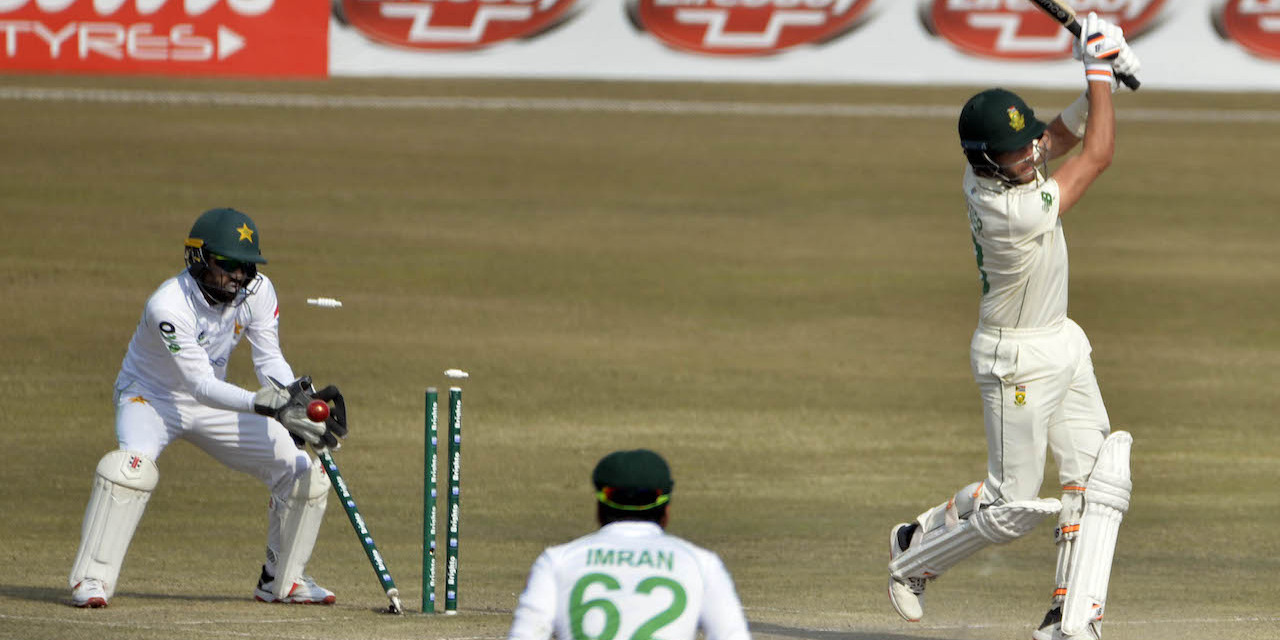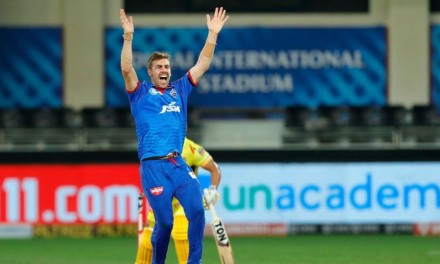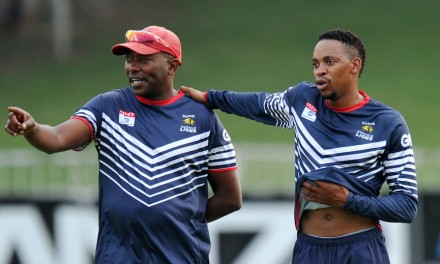The Proteas were schooled by Pakistan on how to handle subcontinent conditions and lost by 95 runs in Rawalpindi yesterday to get whitewashed 2-0 in the series, writes Marc Jacobson.
South Africa was too often prone to suffering cluster collapses in their batting order, even when their tails were up and it is now the ideal time to reflect on some of the defining moments of the Test.
Cluster collapses cost the Proteas
There is no denying that at times the Proteas showed much fight in their batting order, particularly when it came to building partnerships.
After the top order was picked off with relative ease in their first innings, Temba Bavuma (44 not out) and Wiaan Mulder ignited some hope in the middle order to close in on Pakistan’s score of 272.
They amassed a decent partnership of 49, before an opportunist run-out expended Mulder while he was in good touch with the bat.
The Proteas were on 164-6 after Mulder’s wicket and Bavuma was left to fight a lone battle as his partners were skittled out for 37-4 for the rest of the innings as the team suffered their acclaimed cluster collapse to end on 201.
With hopes not necessarily flaring that SA would’ve overtaken Pakistan’s score at the point of Mulder’s dismissal, they could’ve at least shown more fight to get closer, and they should’ve.
The second innings bore even better testament to the side’s infamous cluster collapses when the side was reduced to a lowly 33-7 at the end of the innings to lose the game.
Centurion Aiden Markram (108) did superbly to help the Proteas to get into a winning position through his composed and resilient batting efforts, coupled with his solid partnerships with Rassie van der Dussen (48) and Bavuma (61).
However, after Markram departed, the Pakistanis came to the party and the Proteas bowed their heads in shame as the South Africans went from 241-4 to 274 all out – a dismal and yet spineless display from the mid to lower order.
A similar collapse occurred against Sri Lanka in the second Test in early January when the Proteas fell from 218-2 to 302 all out as these demises are beginning to become all too prevalent.
Whenever any sort of momentum gets broken within the Proteas batting unit, they tend to succumb to the lost momentum and are no longer able to hold their own.
This is seriously problematic for a Test side and it’s even more problematic when the team’s two senior players – Faf du Plessis and Quinton de Kock (captain) – consistently fail to carry the team.
The Proteas have much to ponder after this series loss.

Proteas may have ‘dropped’ the match
Van der Dussen said before the fourth day that the Proteas would be confident in chasing a target of less than 300, and it’s their own faults they didn’t.
They had to chase 370 to win and they had only themselves to blame for letting too many opportunities slip, literally.
Keshav Maharaj was solid with the ball, taking figures of 6-208 for the match, but it should’ve been more, had the Proteas taken their catches.
A shocking four catches were dropped at crucial times in Pakistan’s second innings, all while Maharaj bowled. This came at a time when SA was desperate to dismiss them as quickly as possible so as to attempt chasing a reachable target.
Pakistan’s lower order made easy-pickings of our bowling attack thereafter; as they each combined superbly with Mohammad Rizwan (115 not out).
SA’s body language and their whole persona seemed to have dwindled as Pakistan fed off their lost chances with the ball.
Rizwan combined greatly with number nine batsman Yasir Shah (23) to build up a partnership of 53 and furthermore, an even better partnership with number 10 batsman Nauman Ali (45) to amass a partnership of 97.
Pakistan perhaps scored in excess of 150 runs too many as a result of those dropped catches and the Proteas should’ve had to chase a much lower total, meaning they might’ve won the game since they fell only 95 short.
And, unlike the Proteas brittle batting order, the Pakistani batsmen – even their tail-enders – actually knew how to stick it out in the middle.

Proteas batsmen played too upright
With the Proteas side a very inexperienced bunch on the subcontinent, it’s understandable that they had on many occasions struggled to adapt to the variations of play on offer.
South African batsmen are largely used to a more significant bounce and spring in the wicket, while the subcontinent offers the contrary.
On too many occasions, particularly in the second innings, the Proteas top-order failed to adjust their stance and swing on a wicket where the ball remained lower than they’re used to.
In the first Test it was Pakistan’s spinners who got the better of their order, now it was their pacers. Their frontline batsmen were staying too upright against Pakistan’s seamers, especially when playing on the back foot.
Subcontinent players tend to play with lower hands, often due to their height, which is also why they tend to struggle on SA’s higher grounds and on wickets with more bounce.
Higher bat lifts are more suitable for the shorter formats of the game as it gives you more power and authority at the crease, and it allows you to strike the ball stronger.
But the Rawalpindi ground was very hard and fast and gentle pushes of the ball often sent it to the boundary or for two or three runs in the quick outfield – that’s all that was needed.
In the case of this Test, the batsmen should’ve gotten lower in their stances and set-ups, while slightly shortening their bat lifts.
Bavuma is short in stature, so the low bounce probably played in his favour conveniently, which enabled him to score runs better and more consistently. That’s taking nothing away from his hard-wearing and irrepressible efforts.
Dean Elgar (17), Du Plessis (5), De Kock (0), Van der Dussen and George Linde (4) all fell to these shortcomings, thanks largely to pacers Hasan Ali (5-60) and Shaheen Afridi (4-51).
Pakistan once again played the conditions better and capitalised on SA’s deep inexperience and concerning efforts.
We are 100% bootstrapped. Support us by becoming a Patron.











